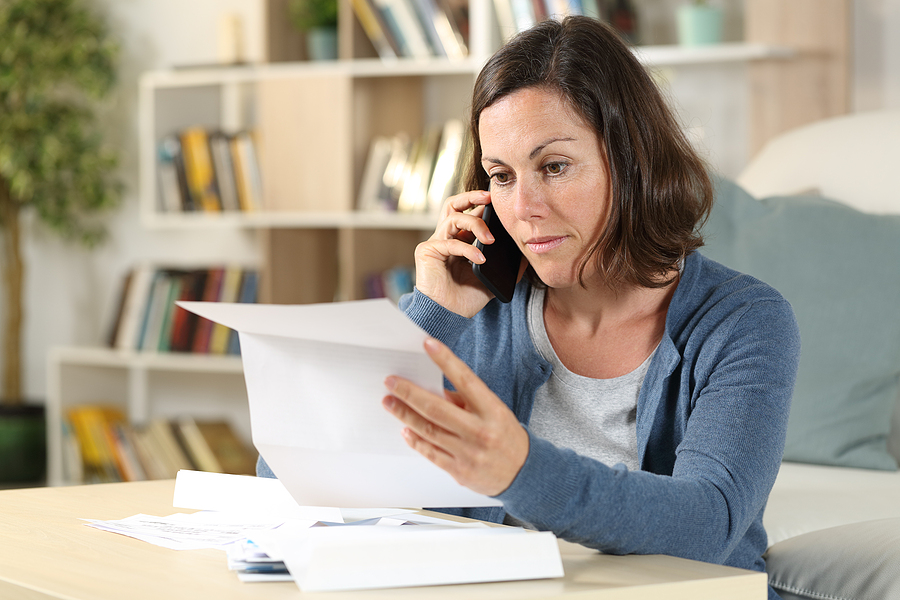What Happens When Your Checking Account Goes Negative and What Steps Should You Take?

When you’re in a financial pinch, you may find yourself spending more money than you have in your checking account. In other words, your account might overdraft or go into the negative.
When your bank account goes negative, you can face a number of unfortunate consequences, including steep fees and potentially even account closure. If you find yourself dealing with an overdraft on your checking account, here’s what to expect and how to recover.
Consequences of a negative checking account
A negative balance in your bank account can be caused by anything from a simple error to a serious financial problem. But regardless of the reason, the penalties can be harsh.
Bank fees
Depending on your bank and the protections in place on your account, there are a few potential outcomes of overdrafting your checking account:
- Overdraft coverage: If you have “overdraft coverage” your bank may allow you to go negative but charge you an overdraft fee around $35. Some banks will continue charging you for additional transactions you make while the account is negative. You do have to opt into overdraft coverage for ATM and debit card transactions, but your bank may automatically cover other transactions.
- Overdraft protection: Funds from one of your other accounts may be transferred to cover the charge if you’ve opted into “overdraft protection.” You will usually pay a small fee for the transfer if it’s made from a savings account or checking account. However, a credit card transfer will likely be processed as a cash advance, which can come with a 5% fee on the amount transferred and automatic accrual of interest charges as high as 28%.
- Nonsufficient funds: If you don’t have overdraft coverage or protection, your bank may decline the transaction due to nonsufficient funds (NSF) or “insufficient funds.” You will owe an “NSF fee” in most cases, and often this fee is the same amount the bank charges for an overdraft.
Vendor fees
If a transaction is declined due to lack of funds, the vendor may also take action against you. Some vendors charge their own fee and may refuse to allow your future purchases. As a result, you could end up with additional issues, like a late payment fee for the transaction you were attempting to make.
Account closure
Your bank could end up closing your checking account if your account goes negative, or even if it dips below a required minimum balance.
Depending on the bank, they may either shut the account down before the negative transaction is completed or allow several transactions (and fees) before closing the account. But once the account is closed, your future transactions, including automatic payments and paycheck deposits, will be blocked.
Trouble opening new accounts
Having your checking account closed can impact your ChexSystems report, TeleCheck or Early Warning report, each of which shows your history with bank accounts and/or bounced checks.
Closed bank accounts don’t impact your credit reports unless you end up with an unpaid debt that the bank charges off to collections, but negative information on your banking reports can cause difficulty opening a new checking account for several years into the future.
Involuntary bank account closures stay on your ChexSystems report for up to five years and on the Early Warning System report for seven years. Here’s where you can pull your banking reports online:
Four steps to recover from a negative bank account
If you overdraw your account or have insufficient funds, you’ll want to address the problem before it gets bigger. Here are some ways you can remedy an overdraft on your account.
Transfer money
If you have funds to cover the expense, make a transfer into your checking account ASAP. A quick transfer can help prevent additional overdrafts and fees from pending transactions and/or upcoming auto payments. On some accounts, you can even avoid an overdraft fee if you cover the negative balance within the same day.
Making a transfer to cover the negative amount can also allow you to reinitiate a charge from a merchant that previously failed due to insufficient funds.
Ask for waived fees
If you’re charged an overdraft or NSF fee, contact your bank and ask them to waive the charge. It can never hurt to ask, and if you haven’t had this problem before, the bank may be willing to waive the fee as a one-time courtesy.
Pay your bank fees
If you can’t get the fee waived, find out when the fee is due and be sure to pay it before it grows, so you can avoid account closure, collection debt and/or trouble opening accounts in the future.
Pay the vendor
If a merchant or other third party tried to make a charge against your account, either from a check you wrote or an ACH, and didn’t get paid, that’s a problem. You may need to pay a vendor fee and take additional action to ensure a payment goes through. This step is especially urgent if payment is for a necessity, like a utility bill or insurance premium.
To correct the issue, contact the merchant to explain the mistake and make arrangements to submit the necessary payment as soon as possible.
How to avoid overdrafts in the future
There are a few simple strategies and habits you can use to keep your checking account at a positive balance moving forward. Here are a few:
- Sign up to receive text or email alerts when your balance is low.
- Check your bank account regularly and review your statements each month.
- Review the dates automatic payments are withdrawn compared to the dates you’re paid. Make adjustments to automatic withdrawal dates if necessary.
- Revisit your budget to make sure spending categories are not consistently exceeding what you can afford.
- Build an emergency savings fund.
- Explore your bank’s overdraft options and consider whether the coverage makes sense for you.
- Keep extra cash in your bank account that you never plan to spend, even if it’s just $50.
Moving forward
Having your bank account go to a negative balance is never a good feeling, but it is also not the end of the world. If this happens to you, be sure to address it as quickly as possible and make a plan to avoid overdrafts in the future.
Need help getting your checking account back on track? Our certified credit counselors offer free counseling session to help you make a budget and financial game plan to help you cover all of your financial obligations.
- Sign up to receive text or email alerts when your balance is low.
- Check your bank account regularly and review your statements each month.
- Review the dates that automatic payments are withdrawn compared to the dates you are paid. Make adjustments to automatic withdrawal dates if necessary.
- Revisit your budget to make sure spending categories are not consistently exceeding what you can afford.
- Build an emergency fund.
- Consider whether overdraft protection and coverage makes sense for you. If they do, ensure that your backup account has a sufficient cushion.
Moving Forward
Having your bank account go to a negative balance is certainly not an ideal situation, but it is also not the end of the world. If this happens to you, be sure to resolve it as quickly as possible and then make a plan to keep it from happening again.
Our credit counselors can help you make a budget and financial game plan to help you meet all of your financial obligations. You can get started today with a free counseling session.



